As a thyroid patient, you’re probably well aware of some of the more advanced tests available to assess thyroid function including things like reverse T3 and sex hormone binding globulin.
But, are you aware of the calculation (not lab test) of the free T3:reverse T3 ratio?
This calculation can give you a lot of extended information about your thyroid and can/should be used by many of you.
This article will walk you through why it’s important, where it falls short, how to calculate it, and more.
What is the Free T3:Reverse T3 Ratio?
If you are new to the thyroid world then these terms may not even make sense to you.
Don’t let that scare you away as they really aren’t that complicated to learn or to understand.
Let’s start with the basics:
What is the free T3:reverse T3 ratio?
This ratio is calculated when you divide these two values together.
What’s important for you to understand here is that this ratio is CALCULATED based on two other lab tests: the free T3 and reverse T3.
You need to know it’s a calculation because otherwise, you are going to be confused when you look at lab requisition forms and you don’t find it anywhere on there.
In order to get this ratio, you need to do a little bit of math.
But, don’t freak out because the math is easy and we will talk about the calculation a little bit more below.
But, before we do, here are just a few of the reasons you would want to do this math:
- This ratio helps you understand how well your body is converting T4 into T3 – read more about this here if you haven’t heard about this conversion process.
- It helps you understand if your current medication and dose are working for you – If your medication is working then your free T3 should be normal and your reverse T3 should be low/normal.
- It helps put your symptoms into context – Many people find that they are confused because of their so-called ‘normal’ lab tests and this ratio can explain how you can have a normal TSH but still not be getting enough.
- It can help you understand how to adjust your medications – many patients do well on a combination of both T4 and T3 medication but most doctors only prescribe T4. This can be a problem for certain individuals and you can identify if you fit into this category with the help of this ratio.
- It can help you understand other factors which you should be treating/evaluating – factors such as gut health and inflammation can all influence this ratio. If your ratio is off then it can help direct you to other problems which may be influencing your thyroid.
- It’s one of the most sensitive measures of thyroid function – the difference between your free T3 and your reverse T3 can identify thyroid dysfunction very early on and becomes abnormal long before other measures of thyroid function such as TSH and free T4.
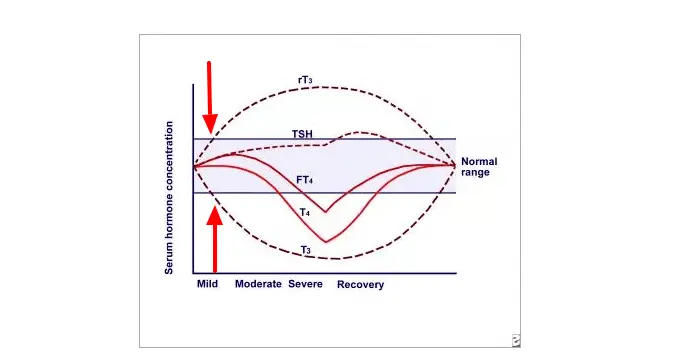
What Does it Tell you?
Clinically speaking, this ratio is supposed to tell you how much free T3 you have RELATIVE to reverse T3 in your serum.
This is important because you can think about these two thyroid metabolites (T3 and reverse T3) as antagonistic to one another.
The more free T3 you have (within normal levels) the more likely your cells are to become activated by thyroid hormone.
The more reverse T3 you have in your body the more likely it is to BLOCK the positive effects of free T3 on your cells.
This occurs because both free T3 and reverse T3 compete for the same cellular thyroid receptors (1).
The main difference between them is that when free T3 is sitting on the thyroid receptor that good things are happening in the cell.
If reverse T3 sits on the receptor it does nothing for the cell except blocking the positive effects of T3.
So, as a patient, you want your free T3 levels to be much higher relative to your reverse T3 levels.
As long as you have sufficiently high free T3 levels you can make the assumption that your cells are being activated by thyroid hormone appropriately.
And your free T3:reverse T3 calculation simply tells you how likely this is to occur.
As a patient, you then have two things to worry about:
Factors that positively influence your free T3 level <– you do want this to happen.
And factors that increase your reverse T3 level <– you don’t want this to happen.
It turns out that there is a single mechanism that controls both levels at the same time.
This mechanism is referred to as T4 to T3 conversion or peripheral thyroid conversion.
This conversion process is incredibly important because it’s not under conscious control by you as the patient.
Instead, it’s under physiologic control based on the environment that your cells are in.
The more readily your body converts T4 into T3 the better.
There are several factors that influence this conversion process in a negative way including things such as calorie restriction (2) (this is why cutting your calories is so bad if you have thyroid disease!), chronic infections (3) (some of the same infections that trigger Hashimoto’s), inflammation (4) (from any cause), gut disruption (many thyroid patients suffer from GI issues), nutrient deficiencies (which is why I include certain nutrients in my thyroid conversion boosting supplement), and more.
These factors, if present in your body, will PUSH the conversion of T4 into reverse T3 instead of free T3.

The more severe the factors the more severe the disruption to thyroid conversion.
Early in my career, I use to see patients who were fresh off of the hCG diet come into my office and present with reverse T3 levels in the 40s to 50s ng/dL.
These levels are incredibly high with respect to the standard reference range which typically goes from around 5 to 25 ng/dL.
A reverse T3 level that high will almost always be accompanied by a very low free T3.
Why?
Because, in the case of calorie restriction, the body is trying to slow down the metabolism to match the reduced calories that you are consuming.
It does this by blocking thyroid hormone which would normally act to increase your metabolism, increase the number of calories that you burn, and increase your heart rate.
It blocks this process which slows down your metabolism, causes weight gain, lowers your heart rate, and lowers your body temperature.
Calculating your Free T3: Reverse T3 Ratio
Remember when I said you would have to do some math to get this value? Well, we are on that part.
Don’t freak out though because it’s very easy to calculate.
All you need to do is take your free T3 and divide it by your reverse T3 (see the example below).
The only somewhat challenging part can be ensuring that your units are correct.
This is typically only an issue if you are getting your lab test outside of the United States but for the purposes of this article you need to make sure that your units are as follows:
- Free T3 (sometimes referred to as triiodothyronine, free on lab tests) should be in pg/mL
- Reverse T3 (sometimes referred to as triiodothyronine, reverse on your lab tests) should be in ng/dL
If your reverse T3 and free T3 are not in the proper units you can use a calculator such as this one to transfer them to the correct units.
Once your units are correct then you can simply do the calculation.
So, what kind of value should you be looking for?
In general, you want your calculated value to be greater than 0.20.
If your calculated value is less than 0.20, such as 0.15 or something similar, then this might be an indication that you have an issue with thyroid conversion or you are on the wrong medication.
From here you may want to favor therapies that tend to increase your T3 (such as those found here) over therapies that tend to increase your T4.
Let’s look at a practical example (from one of my patients):


In this example, we have a value of 14.4 for our reverse T3 and a value of 2.8 for our free T3.
Because they are in the proper units (free T3 is in pg/mL and reverse T3 is in ng/dL) we can divide 2.8 by 14.4 to get the value of 0.194.
This value is less than our 0.20 cutoff that I mentioned previously and so this patient may have an issue that needs to be corrected.
In this situation, I would take a deep dive into the history and other lab tests of this patient to determine if they are indeed converting thyroid appropriately or if they have issues that may be blunting this process from occurring.
If the units are not correct then you would want to convert them before doing the calculation.
Remember, though, that this calculation is not perfect and the ratio that works for your body may be different from what others need.
So don’t be alarmed if you find that your free T3:reverse T3 ratio is less than 0.2 and you are feeling amazing.
If you are feeling poorly, however, then this data point can definitely help put you on a different path and help you.
How helpful is it?
The question really becomes:
How helpful is calculating the free T3:reverse T3 ratio and is it something that you should look at every time you order your lab tests?
The answer is not as straightforward as you might think.
While calculating this ratio is certainly helpful, I wouldn’t consider it vital in every single case.
Certainly, however, if you looked at the data you would find that some consider this ratio to be the single most important thyroid test (or calculation, depending on how you look at it).
But I just don’t see this to be true in clinical practice.
One reason for this is that this ratio can be manipulated based on the type of thyroid medication that you are taking and the time of day that you get your lab tests drawn.
This can result in you forcing your ratio into an “optimal” range and yet still feeling the symptoms of hypothyroidism.
The reason for this has to do with how volatile your serum free T3 level can be.
For instance, if you take any medication which contains T3 and then check your thyroid lab tests within a few hours, you will find that your free T3 level skyrockets up.
It will rocket up to high levels but it will eventually fall down over the next 24 hours.
So, depending on when you test your free T3, and when that compares to when you took your T3 medication, you can artificially adjust your free T3:reverse T3.
But this doesn’t necessarily mean that you are doing the right thing or even helping your situation.
So, what does this mean for you as the patient?
It means that the free T3:reverse T3 ratio is something that you will want to keep an eye on it, but I wouldn’t base or adjust your medication solely on this factor.
When you get into advanced thyroid lab testing you can also check other factors such as your sex hormone binding globulin and total T3.
Both of these lab tests tend to be better markers of long-term T3 status in the body.
Your Doctor and the Free T3:Reverse T3 Ratio
Based on how important of a calculation this ratio is, you might be surprised to find out that your doctor may have never heard about it.
If it’s so important why don’t more doctors know about it?
I think the main reason has to do with the fact that most doctors are content looking at the TSH and Free T4 values.
From their perspective, there really isn’t any other reason to look beyond those tests because that is how they are trained.
But that doesn’t make this ratio any less important, especially for those who have more atypical types of cases.
In fact, the more atypical case that you have, the more likely you are to benefit from extended thyroid lab tests and calculations.
And by atypical I am referring to those patients who don’t respond well to T4 medications such as Synthroid or levothyroxine, to those patients who are taking medication but are still symptomatic, and so on.
These types of patients benefit greatly from calculating this ratio.
The good news is that you don’t really need your doctor to calculate this test but you do need him/her to order the requisite lab tests on your behalf.
Once you have the lab tests though you can simply use the guidelines above to calculate it.
As always, my recommendation is to find a doctor who is willing to work with you but if that isn’t possible given your circumstances then you can still go about calculating it yourself.
Conclusion
My personal opinion is that you should not only be aware of the free T3:reverse T3 ratio but that you should also understand how to calculate it and at least calculate it on some of your lab tests.
Believe it or not, however, I don’t actually calculate this ratio myself on all of the patients that I treat.
This is not because I don’t think it’s important but more because I can generally see the trend of the free T3 and reverse T3 and overall thyroid pattern without doing the actual calculation.
But, understanding the importance of this metric is very important, especially for those who are just starting on their thyroid journey.
Now I want to hear from you:
Have you calculated your free T3:reverse T3 ratio?
What did your results tell you?
Was it what you were expecting?
What do you think could be contributing to your result?
Leave your questions or comments below!
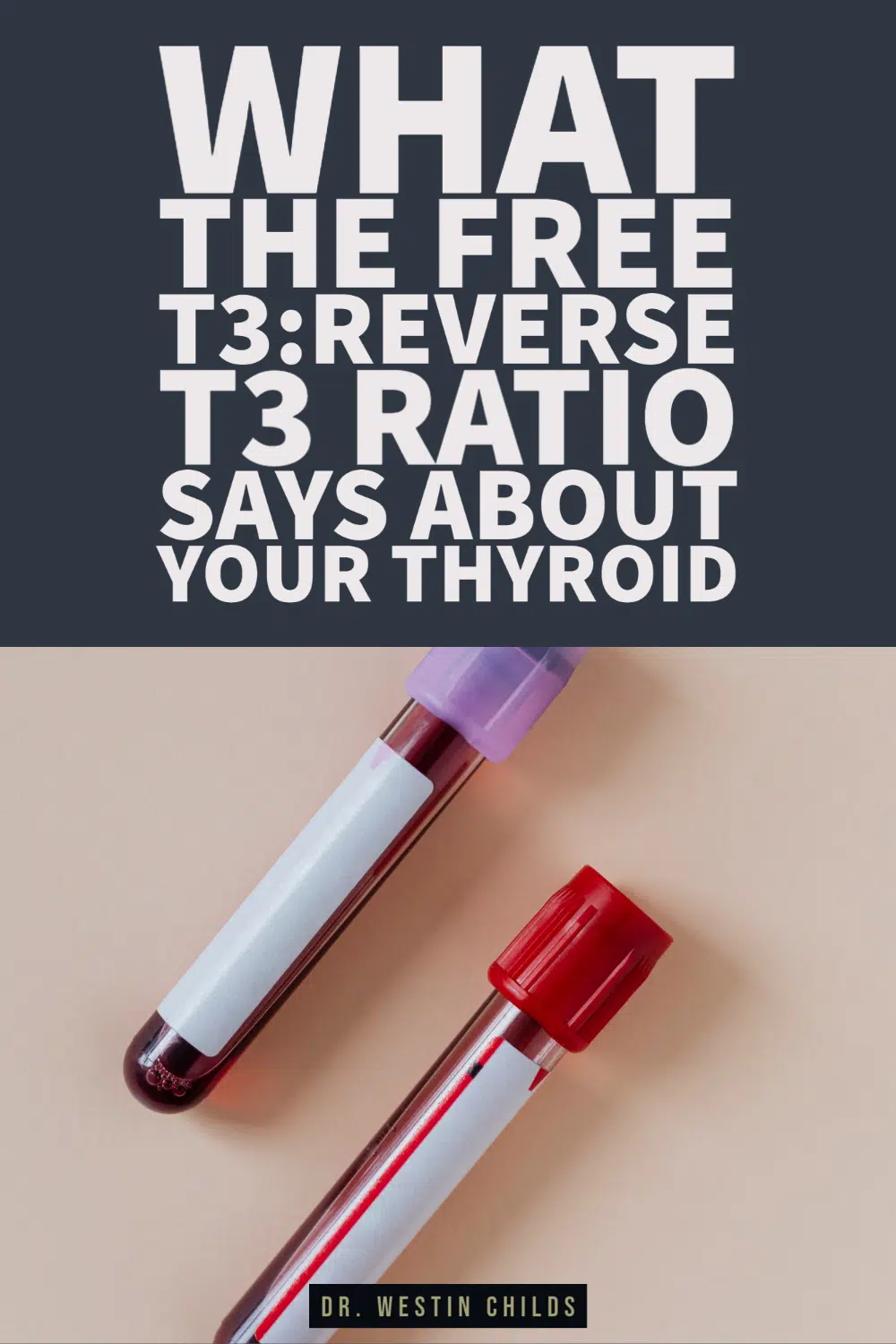
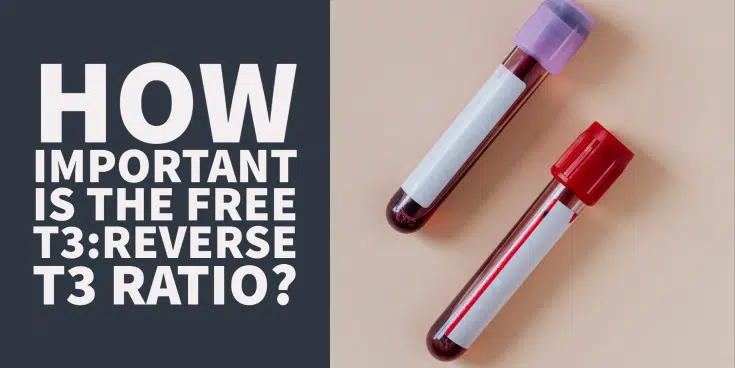
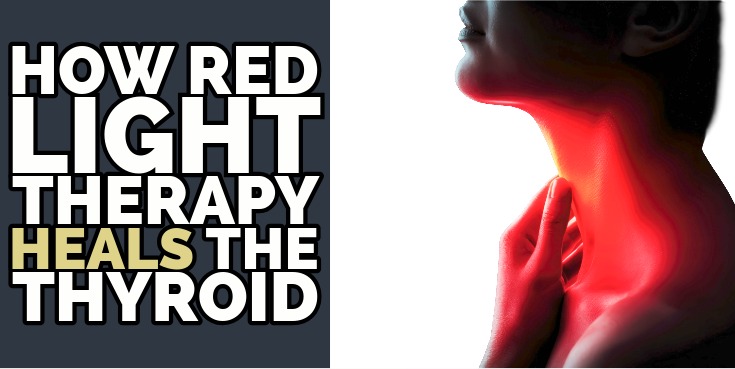

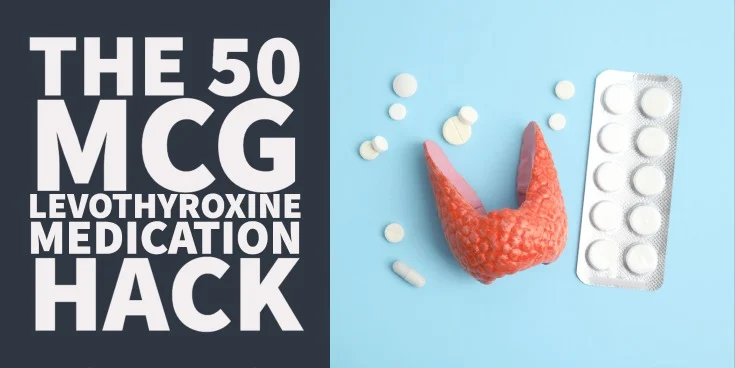
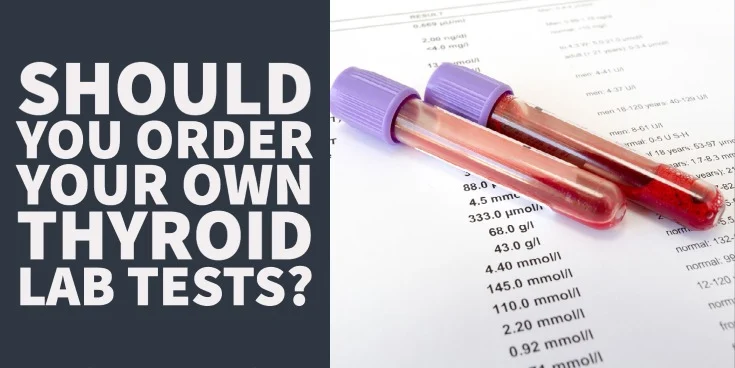
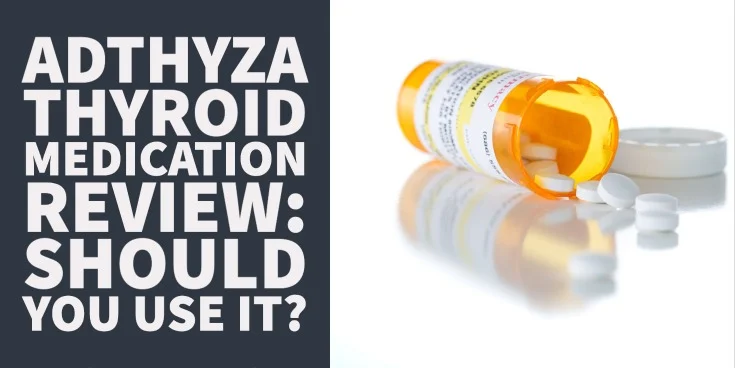
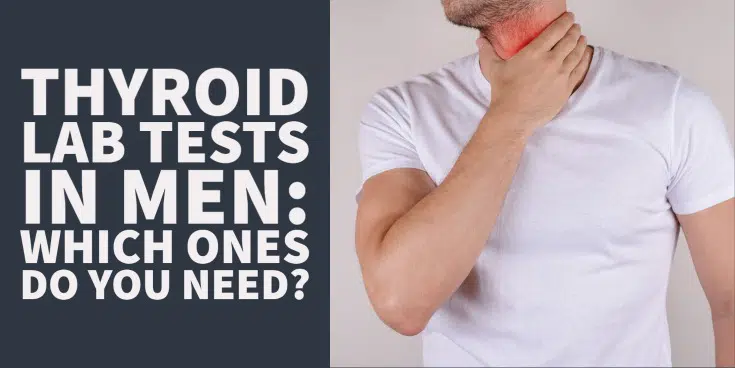

I am curious as to whether you think my labs are indicative of a serious thyroid problem: Ft3 = 2.7, Rt3= 36.8, ratio = .07.
I’m have been on 30mg of armour (divided dose) daily since 1999. Have hypo symptoms recently–fatigue, sleep, morning headaches. Age 74. Thank you!
Hi Leigh,
Labs are only part of the equation when considering thyroid disease. You also need to assess clinical symptoms and put them into context. If the symptoms fit AND the lab tests are abnormal, then those two things have strong positive predictive value for the presence of thyroid disease.
Hi, I just went to an endocrinologist to get more intensive blood work to find out why I am getting more and more nodules on my thyroid. Had 2 and over the last 7 years I now have 8 or 9. She sent me for lab work. TSH is 1.88, T4 Free is 0.9, T3 Total is 96 and Thyroid Peroxidase Antibodies is 1. I wanted to use your calculator to find out if I am within what ranges and now I see Free T3, Reverse T3 and Thyroglobulin Antibody on your information pages. I was not tested for this? Why would I not be tested if this matters? And Should I ask this doctor to perform these two additional tests or just go with the information I now have. I feel lousy and I am tired of going for yearly ultra sounds given by my primary doctor only to find out that I am not getting anywhere on preventing nodes from growing or multiplying. I am 68 and feel 80. So discouraged because I believed going to a specialist would give me the proper tests to find out what I could do. My primary just says I am on the border line …maybe. Am waiting for Endocrinologist to get back to me. Are more tests needed to get an answer and should I press this doctor to give me those tests or just look for someone else?
Hi Josette,
There isn’t a strong link between thyroid function and thyroid nodules which is probably why your doctor didn’t order those tests. Most people with thyroid nodules do NOT have issues with thyroid function (this is the general rule). In addition, ordering these tests do not tell you WHY you have the nodules. To do that you will probably need to biopsy them (with genetic testing) and get a very comprehensive and environmental exposure history.
I should also point out that most doctors are not concerned with the “why” behind people have thyroid nodules. They are more interested in if they are cancer or not.
I had a TT 4 years ago. I’m on .137 mcg. Tirosint. Would this t3 testing be relevant for me?
Hi Deb,
Yes, it still pertains to those without a thyroid.
Hi there,
I have a ratio of 0.197
T3 being 3.7498 and reverse t3 being 19
T4 = 15 pmol/L
T3= 5.76 pmol/L
My insulin in 170 pmol/L
I am on Erfa ( 1.5 grains in morning and 1 grain in afternoon).
I am struggling to lose weight and at a loss what to do next.
What would you suggest?
I was diagnosed with Hashimoto’s thyroiditis, hypothyroidism about a year ago. My MD will only test for TSH, So I ordered a “Thyroid Panel” from a private testing company.
This what I got back: TSH 0.08, Free T4 1.20, and Free T3 2.46: That’s it-no Reverse T3 or T4. (it was not offered for testing.)
Could you enlighten me as to how I can get those tests? I live in a remote mountain town in Colorado. Thank you Email us: Click to view address.
My calculation is free T3 was 4.3, Reverse T3, 14.0, the ratio is .31. My TSH is 10.65. I still cannot get to feeling better, in fact, I have a nodule on the front of the right side of my neck. A US needle biopsy was done Atypical cell, nonconclusive, more test are scheduled. I do not want to lose my thyroid!
Katherine Reighley
Hi Katherine,
Typically, we don’t biopsy thyroid glands based on thyroid lab results so your thyroid nodule and your abnormal thyroid lab tests are probably unrelated (except that you have two different conditions in the same gland).
Thank you Dr Childs for all of the information you provide, it is invaluable. I have been struggling with thyroid disease my whole life (45+ years) because I have never been able to get the help I need in Australia, or the UK when I lived there. No follow up after surgery as a teen, I became severely hypothyroid and extremely ill. I finally borrowed a medical book from the local library and made the diagnosis myself – then asked a GP to please do a blood test. Started on thyroxine at 21. Have also been diagnosed with fibromyalgia. Having reached rock bottom with no quality of life, I started researching and first found Dr John Lowe’s research. I only fairly recently found you. I am currently looking for a suitable doctor I can access (who doesn’t just treat with Levothyroxine) as the local specialist doesn’t even test for T3. I finally managed to get a GP to agree to an RT3 test, and as I suspected, it is off the chart! My last RT3 was 950 pmol/L with the ref range in Australia being (140-540). Of course the GP didn’t know what to do with the results and sent me away with no advice. My last Free T3 was 4.4 pmol/L with the ref range in Australia being (2.6-6.00). Doctors always want to reduce my Levothyroxine based on my TSH which since surgery has been negligible, usually around 0.01mIU/L. After repeatedly becoming even more hypothyroid from doing this, I stopped following this advice.
Dr Childs-
I have been on NP Thyroid or Naturthroid for 4 years now at a dose of 0.5 gr. The main reason to begin was excessive hair loss, which I still have. I now wear a wig. My TSH and Free T3, Free T4 have always been normal, yet my Free T3 hangs at the very bottom of the normal range. My naturopath has always told me to test without taking my throid meds that same day. Last year I began taking my thyroid meds on the day of testing and scheduling my appointment 3-4 hours subsequent to have a direct comparison each time. The last time drawn I began taking a thyroid conversion supplement (6 weeks prior) to see if it would cause an increase in Free T3. I made it to a level of 3.0 pg/mL, which is the highest level I have ever seen. Previous high was 2.8. Is this my “skyrocket” number that you refer to in your article? If so, it’s not that high. I still think I have a significant conversion issue. My Reverse T3 fluctuates and was lastly 15 ng/dL. So my ratio calculates out to be 0.20, which is the lower threshold of your normal range. Still wondering if I need an additional T3 only med. How can I get a consult with you?
Dr. Childs.
I used the calculations for theT3/RT3 Ratio from this site.
https://shop.suzycohen.com/pages/thyroidconverter.
I entered the results from a recent lab test into this converter making sure I had the correct units listed on the lab results.
Using RT3 of 15.8 ng/dl and 2.2 pg/ml, my result was a ratio of 13.9.
Using your method I get .139. Your value is moving the decimal point two places to the left from what I get using the calculator mentioned above.
I don’t understand the 2 different values. What am I missing?
I’m a 63 yr old female, feeling everyday very fatigued, tired, brain fog, and hair loss.
My Free T3 is 2.3 pg/mL – Rev T3 is 14 ng/dL giving me a figure of 0.164 when divided. So below the 0.20 cut off.
I do have small intestinal bacteria overgrowth going on, constipation, hiatal hernia and hormones out of balance. I am working on getting rid of the SIBO with herbs. I don’t know what to do next with all of this. What would you suggest I do about my thyroid?
What if the ratio is exactly .2? I have been fighting a chronic infection and discovered that I have low igM. I have been diagnosed with Hashimoto’s Disease which can cause low igM.
Hi Moe,
Lab tests should always be used in conjunction with how you are feeling clinically. The value may not mean a lot if you feel terrible and your other labs indicate a conversion issue.
I recently had labs done, FT3 2.7pg/mL, RT3 .8ng/dL ratio comes out to 3.375, however the RT3 is below normal range. I’m having a hard time finding information on this scenario. My T4 was 1.4ng/dL and within normal ranges as well as my TSH which was 2.2. The only other return was my vitamin D levels which were low at 14ng/mL. I’m hypo and still present with common symptoms, fatigue, morning headaches, weight issues. Could the low RT3 and vitamin D be a cause?
Hi Danielle,
It’s impossible to say without an in-depth dive into your history. It could be the case that rT3 is contributing or it could be the case that your rT3 is a sign of some other problem that has been overlooked/missed.
Hi Doc,
I am new to all of this Thyroid information and am trying to learn. I went to a wellness center to get some bloodwork done after battling being ill for over a year from mold poisoning. I rented a house and fell ill and bed ridden for 3 month’s. Went to a doctor and was put on 4 different antibiotics and a bunch of steroids so when I got bloodwork done when I was sick it didn’t show what was really going on due to all the steroids they had me on.
Fast forward after learning the house was ridden with mold we packed bags overnight and stayed in hotel for a month while searching for another place. I have been dieting and tacking vitamins and supplements to help rid my body of mold. I am still on a journey and not sure how or if it all is working. I just know I feel like poo and still not myself after 2 years of suffering. And no one to listen to me. Once you mention mold doctors run.
At this clinic that I had bloodwork done at. The Lady I see is an APRN..
She believes I have Hypothyriod. She like everyone else only run certain panels but went ahead and did two extra for me. I didn’t know to ask for reverse T3 until now.
Does it look like from my bloodwork I am Hypo or Hashimoto’s?
Cardio CRP 1.18 came down from a year ago was 1.29 Optimal is <0.65
Homocysteine 10.2 went up a bit from 9.2 Optimal is <10
ESR is 3 first time checking that one.
THYROID
T3 Free Optimal 3.0-4.4 Mine is 2.6 and a year ago it was 2.6
T4 Free Optimal 0.70-1.53 Mine is 1.18 and a year ago it was 1.25
TSH Optimal 0.35-2.1 Mine is 1.450 and a year ago was 1.800
Thyroglobulin Antibodies Optimal 0-0.9 Mine is 3.8 high and first time testing for it I has to ask for this test.They do not normally do this one
Thyroid Peroxidase Optimal 0-35 mine is 13 this is another one I asked for that they do not usually do.
VitaminD 25-OH, Total Optimal 40-80 mine is now 70.1 up from a year ago was 31.3
Hi Rosemarie,
Unfortunately, I can’t give you diagnoses or medical advice based on your thyroid lab tests. I would recommend checking out this article regarding how to diagnose Hashimoto’s, though: https://www.restartmed.com/diagnose-hashimotos-thyroiditis/
Hi Dr Childs I have been on various thyroid medications for many years
Recently on Levothyroxine 200 and Liothyronine 60 My ratio is .13 with free t3 3.8 and rt3 28 free t4 1.31
T4 10.0 total t3 118 tsh <0.01 I have been on optavia weight loss program – could that be the cause of my rt3 increasing or am I on too much t4? Theoretically speaking of course
Thanks
Hi Kellu,
It looks like your total dose of thyroid medication is probably too high but you’d have to do some experimenting to figure out if that’s the case.
Dr Childs,
I currently take Ozempic(.5) and T3(2.5) and synthroid (25). Since Ozempic delays gastric emptying, how does this affect thyroid med absorption. I have recently started to increase time after thyroid meds to full hour before eating & other supplements. Your thoughts?
Suzi
I have a (T3) Free level of 3.5 & a R T3 of 10 so I divide 3.5 by 10, which equals 0.35. Is this good or bad? I take no T4 whatsoever (for last 30 days).
Hi Keith,
More important than your labs would be how you are feeling and whether or not you are experiencing thyroid-related symptoms. Lab results by themselves can only give you so much information.
Dr. Childs,
LOOK at your response to Keith dated April 4, 2022. That is exactly the kind of bullshit I’m talking about. If you’re going through all of these “How to Calculate your rT3” then GIVE STRAIGHT answers to people who ask for them or STOP blogging. This response to Keith is ignorant, non-empathetic, and makes you sound like you don’t know what you are talking about.
Having watched videos, and read articles you are the ONLY one, so far, that has this convoluted calculation and then you won’t tell people what it means!
Do you know what it means? If you do, I think you owe Keith an apology and the answer to his question.
And answers to the questions that people on your blog ASK. Why don’t you answer the questions?
Hi Rhonda,
Unfortunately, it’s not quite as simple as just calculating a value and then understanding what to do next. That’s what I was trying to relay in my response to Keith. Your ratio may or may not be important or relevant depending on your symptoms. And, even then, the ratio is not always the most important of all thyroid lab tests.
This article explains in detail how to calculate the ratio so I would refer you to the article itself for more information on how to do that or go to this page and download my resource titled “How to Calculate “Optimal” Free T4, Free T3, & Reverse T3 Ratio”: https://www.restartmed.com/start-here/
I try to answer most questions but there are just too many for me to respond to every single one. There are some 21,000+ comments on my blog not including thousands from Facebook, youtube, Instagram, and so on. I’m only one person so it’s just possible to answer them all but I do my best 🙂
Hello! Great article, thank you for writing it.
I wondered if you could help. I have been experiencing worsening hypothyroid symptoms for around 8 years now, which have rapidly worsened over the last 2 years.
Last year I finally had someone look into my rt3 ratio. My results were as follows:
TSH: 1.81 (normal)
Free T4: 12.9 (low end normal)
Free T3: 3.8 (normal)
Reverse T3: 0.41
Reverse T3 ratio: 9.3 (oh dear.)
It really made sense with how I have been feeling. I also have gut issues, general hormone imbalances, adrenal problems, and more recently worsening adhd symptoms (could be just symptoms of the same problem or something else). I also have suspected heavy metals issues, however attempting to treat these always worsens my thyroid symptoms, so it seems this metabolic issue needs to be supported first, at least a little.
I have found lots of information on understanding t3/rt3 ratio, but not much on how to improve that ratio even temporarily so I can work on the potential root causes. One is slow release t3. I wondered if you had any other ideas on this?
Thanks!
Hi Onike,
Using T3 medication of any type is a quick and dirty fix for optimizing T3 levels: https://www.restartmed.com/reverse-t3/
It doesn’t have any impact on the root cause but it can help fix the ratio temporarily.
RT3 19.9, FT3-3.4, FT4 1.23, ratio is 17.09 not great. I am on NP thyroid 2 grains. I wonder if I cut back just one to two pills a week if it would help lower my reverse t3. A couple years ago I was on just one grain when my tsh shot up but then I started gaining weight.
Hi Michelle,
There are many ways to manage high reverse T3 and one of those ways is to lower thyroid medication. It’s not my favorite method but it can work. You can learn more about other options here: https://www.restartmed.com/reverse-t3/
Thank you very much for this insightful article, Dr. Childs. My ratio is very low at barely 0.02. I am increasing my desiccated hormones as of today, will continue my clean diet, and I’ll also start taking your T3 conversion booster. I am hoping to feel a decrease in symptoms, which have worsened in the last few weeks.
Hi Karen,
That sounds like a good plan. You can also find additional treatments to help here: https://www.restartmed.com/increase-free-t3-naturally/
Thanks for the great information.
I’m a recently retired physician, been on keto diet diet for roughly 3 years keeping carb below 20gm/d using CGM as well. Lost plenty of weight, pre-diabetes labs all returned to normal, fasting insulin normal.
One year ago, developed obvious symptoms of hypothyroidism with hair loss, fatigue, loss of outer third of eyebrows, etc.. Free t3 borderline low-normal, free t4 and TSH normal. Of course my internist wasn’t moved at all. Wouldn’t check RT3
Though I remained steady on keto diet (very easy to do), regained about 15 lbs and have plateaued despite being in ketosis and eating one and a half meals per day. Finally ordered my own thyroid labs. No antibodies.
My last free t3 was 2.9; free t4 1.23; TSH 1.9; and Reverse T3 24.6** (slightly high).
After watching your YouTube videos and reading your articles, I’m beginning to think with the weight loss stall and the high RT3, that I may have inadvertently caused a downshift in my metabolism and RT3 is preventing a return to a more normal basal metabolic rate. Basically causing a hypothyroid condition via elevated RT3.
How does a patient maintain a keto diet which, because of the higher healthy fat content, provides adequate calories, actually stop the over-production of RT3? I’m not calorie restricting at all, though after losing 50lbs total, my metabolism may have adapted more than anticipated.
Does increasing T3 via medication allow the FT3 to “out-compete” with the RT3 for the T3 receptors? My internist, a colleague, is of no help. In generally, how does one overcome a persistently elevated RT3 induced by significant weight loss and keto diet?
Thanks, Mike
Hi Mike,
In a sense, yes, the more T3 that you take the more likely it is to outcompete the rT3. But this isn’t always the best treatment approach because, ideally, you’d want to find the cause of the high reverse T3 and treat that problem. We know, for instance, that low carbohydrate diets, when used long-term, can cause this very thyroid lab pattern. You can learn more here if you are interested: https://www.restartmed.com/carnivore-diet-thyroid-problems/
Hey Dr Childs, hello from Germany.
I know this is a bit to short to give you a good anamnesis, but I have no hair (alopecia universalis, but a little common back atm as I am on an autoimmuneprotocoll). My thyroidvalues were the first starting point in my search for an answer over 10 years ago.
My values now are ft3 3.7, ft4 1,5 and rt3 32. TSH 1.9. TSH over 10 years ago was 4.2, and got down to 2.5-3 and then last measurement was 1,9. The ratio now is very bad as you written down here. 0,12 –
My selenium is good, iodine, iron, protein, vitamin a, omega 3 etc all in place – any suggestion? Struggling with digestive issues although better now on the protocol. What role could stress play?
Thank you very much – Best – Franz
Hello and Thank-you for this article.
I have a question: ” In this example, we have our value of 2.8 for our reverse T3 and a value of 14.4 for our free T3.”
Do the numbers actually go with the opposite test? That is how I read the table: FT3 is 2.8 and RT3 is 14.4
Hi Susan,
Yes, sorry, those values should be flipped. I will make the correction.
Hi Dr. Childs!
My T3 Free is 2.4 and T3 Reverse is 5 ratio is 0.48. 7 weeks ago I stopped 0.50mcg of Tirosint & started taking (1) 5mcg Cytomel (T-3 only). I didn’t have reverse T3 test before the one I just did after 6 weeks on Cytomel only. My T3 Free stayed almost exactly what it was before stopping the Tirosint; however, my TSH went from 3.07 up to 18.75 in 6 weeks. I told my doctor I felt so much better on only the Cytomel. She had given me that to take back in January but when taking it with the 50 Tirosint I got really wired and tired. After I looked at your website I just decided to try the Cytomel alone. I had a 4 month outbreak of viral hives which led me to do this for myself. I have suffered with herpes 2 outbreaks regularly (2 x’s per month for the past 20 years). I actually have been doing better with that since the change in medicine. I am now taking Tirosint 0.25 mcg along with the Cytomel 5mcg every morning and will retest in November. I am still feeling good but felt better on Cytomel alone.
I would really appreciate your input on what I am doing as I have been wondering if just upping the 5 of Cytomel alone would be a better solution possibly. Thanking you in advance for your help and for all of the information and support you have provided!!
Best,
Christine